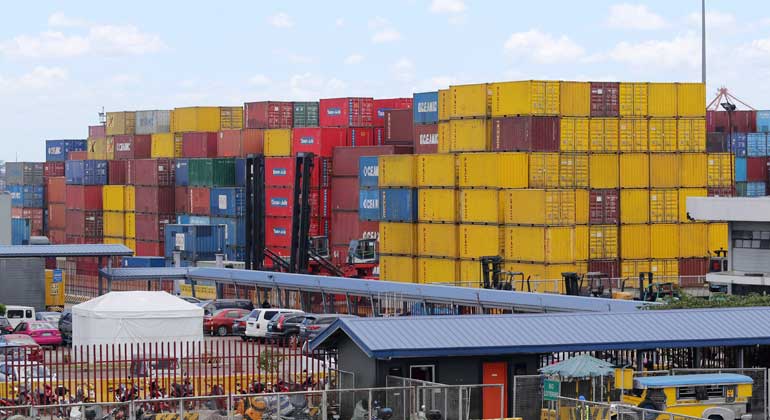
By Jenina P. Ibanez, Reporter
THE Trade department is reviewing its long-term export targets after the pandemic-induced global downturn stymied the sector’s growth.
Trade Undersecretary Abdulgani M. Macatoman said the Philippine Export Development Plan (PEDP) 2018 to 2022 is now being reassessed in light of current developments.
Signed by President Rodrigo R. Duterte last year, the PEDP is a roadmap prepared by the Trade department to increase goods and services export revenues to $122-130.8 billion in 2022.
“We are reviewing and assessing the PEDP’s strategies, indicators and export targets to see if such are still doable or not and continue to be optimistic that we will be able to still achieve even the low-end target of $122 billion in 2022 hand-in-hand,” he said at the online National Export Congress on Thursday.
The PEDP uses various strategies for export development, including the reduction of regulatory impediments, improvement of access to trade financing, the use of free trade agreements, and the creation of support packages for select products and services sectors.
Trade Secretary Ramon M. Lopez said that the PEDP is reviewed periodically.
“We’ve proposed revisions aligned with the pandemic effects and impact to our economy,” he said during the same event.
Mr. Lopez added that the department is developing an upskilling program for workers, which he said is part of export development.
“This will develop our human resources, which is our country’s greatest asset. We call on our partner-agencies — the Technical Education and Skills Development Authority (TESDA), the Commission on Higher Education (CHEd), and the Department of Education (DepEd) — to help us,” he said.
The Philippine Exporters Confederation, Inc. (Philexport) on Monday said that export revenues will likely reach at least $100 billion in 2022, about a fifth lower than the government target, mostly because of the global economic slowdown caused by the coronavirus pandemic and calamities this year.
The industry group had said that the $100 billion would depend on the extent of government assistance for the industry.
Year to date, goods exports declined by 13.8% to $45.87 billion by September, data from the Philippine Statistics Authority showed. Total merchandise exports were valued at $70 billion in 2019.
Mr. Macatoman asked the private sector to help the government as it develops policy reforms to improve export performance.
RESILIENCE
At the same event, ASEAN-Japan Center Secretary General Fujita Masataka said that the Philippines must digitalize its trade and services sectors to boost the resilience of its participation in the global value chain.
He suggested that the country improve its telecommunication infrastructure and information technology facilities for e-commerce. The Philippines and Japan, he added, can work together to develop these digital networks.
“Philippines BPO/BPM (business process outsourcing/business process management) service should be more digitized, otherwise (it would be) losing competitiveness areas under the new normal,” Mr. Masataka said.
He added that the governments should reconsider strategies for international production, as global foreign direct investment is likely to decline this year.
“The Philippines should provide an environment conducive to the operations of Japanese companies through, for example, assisting them to maintain and rebuild more resilient global value chains,” Mr. Masataka said, adding that the government must resist protectionism.
